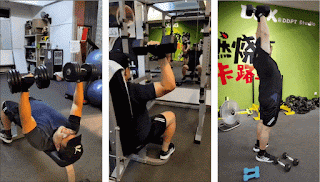How can I lift heavy weight without getting big?
How can I lift heavy weight without getting big?
Lifting heavy weights has long been associated with building muscle and achieving a bulkier physique. However, not everyone aspires to become a bodybuilder with massive muscles. Some individuals, especially women, may be concerned about the potential for excessive muscle growth when lifting heavy weights. The good news is that it is possible to lift heavy weights without getting big, and in this article, we will explore the strategies and techniques to achieve that goal.
Understanding the Benefits of Lifting Heavy Weights:
Before we delve into the specifics of lifting heavy weights without bulking up, it's essential to recognize the many benefits of incorporating heavy lifting into your fitness routine. Heavy weightlifting offers a range of advantages beyond just muscle growth:
- Muscle Definition (Tone): Any resistance training, including lifting heavy weights, contributes to muscle development. Muscles become more defined, leading to a toned appearance. Increased muscle mass can boost metabolism, aiding in fat loss.
- Fat Loss: Lifting weights helps burn calories during and after workouts. Lean muscle tissue burns more calories at rest than fat tissue. Combining heavy lifting with proper nutrition can promote fat loss.
- Strength Gains: Heavy lifting enhances overall strength and functional capacity.Improved muscle strength benefits daily activities and athletic performance.
- Health Benefits: Strength training reduces the risk of various health conditions, including heart disease and osteoporosis. It enhances sleep quality, reduces stress, and improves mood.
Now that we understand the benefits, let's explore how to lift heavy weights without gaining excessive muscle mass.
How to Lift Heavy Weights Without Getting Big:
- Determine the Right Weight: Finding the optimal weight is crucial. It's not about lifting the heaviest weight possible but choosing a challenging yet manageable load. For those concerned about bulking, select weights that you can lift for 1-5 reps comfortably.
- Focus on Low Reps: Lower repetition ranges (1-5 reps) are ideal for building strength without adding bulk. This approach minimizes hypertrophy (muscle growth) while maximizing neuromuscular adaptation.
- Lift Explosively: Emphasize lifting explosively to recruit fast-twitch muscle fibers. Explosive movements, such as Olympic lifts or kettlebell swings, promote power development without significant muscle growth.
- Incorporate Plyometrics: Plyometric exercises, like box jumps and hurdle hops, enhance stretch-shortening cycle efficiency. These exercises improve reactive abilities and power without excessive muscle mass gain.
- Reduce Volume: Lowering the number of sets and reps (e.g., 2-3 sets of 1-5 reps) minimizes the stimulus for muscle growth. I allows you to focus on strength rather than size.
- Longer Rest Periods: Increase rest intervals between sets (2-5 minutes) to ensure optimal recovery. Longer rests maintain performance during each set, essential for lifting heavy.
- Sprint and Agility Drills: Incorporate sprint intervals and agility drills to build functional strength. These exercises improve acceleration and deceleration without excessive muscle mass.
- Contrast Training: Contrast training combines heavy strength exercises with plyometrics to enhance power. It utilizes post-activation potentiation for improved performance.
- Strengthen Weak Links: Identify and target weaker muscle groups to prevent imbalances and enhance overall strength. Strong supporting muscles improve the efficiency of prime movers.
- Prioritize Strength Training: Focus primarily on strength training without adding unnecessary instability. Stable ground and proper form are key to maximizing strength gains.
- Avoid Static Stretching Pre-Workout: Replace static stretching with dynamic warm-ups before lifting. Static stretching can negatively impact strength and power production.
- Proper Nutrition and Recovery: Adequate nutrition, including carbohydrates for energy, is essential for strength training. Ensure proper recovery, including rest and sleep, to support strength development.
A couple of Jokes to lighten the day:
- Why did the weight lifter bring a ladder to the gym? Because he heard it was the quickest way to reach new heights in strength training!
- How do weightlifters stay cool during workouts? They use heavy-duty fans because they're experts at "heavy" lifting and "cool" reps!
Conclusion:
Lifting heavy weights doesn't have to lead to excessive muscle growth or a bulky physique. By selecting the right weight, focusing on low reps, lifting explosively, and incorporating specific training strategies, you can build strength without adding significant muscle mass. Remember that the key is to find a balance that aligns with your fitness goals, whether it's increased strength, toned muscles, or improved athletic performance. So, go ahead and lift those heavier weights with confidence, knowing that you can achieve your desired results without getting big.
Yours Truly,
Gary
September 8, 2023
Follow me on my Blog, and Facebook for Everything You Need to Know to stay fit & Strong over 40. You can also contact me at contact@fit40strong.com

Comments
Post a Comment